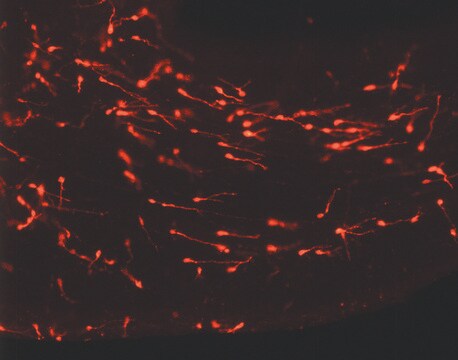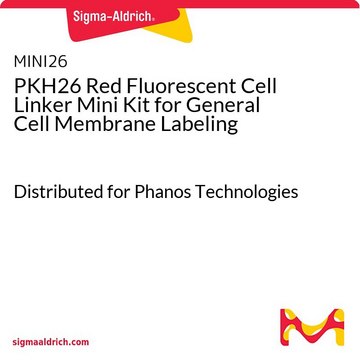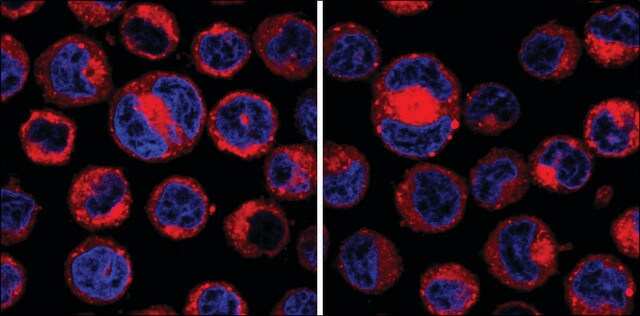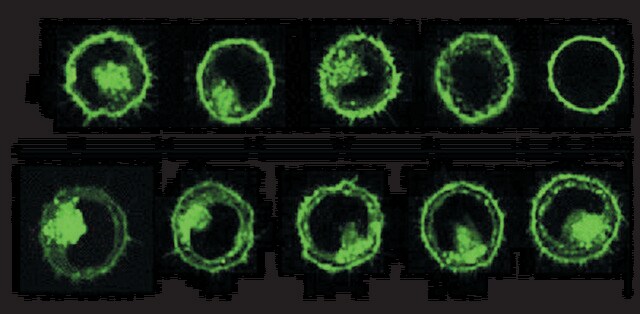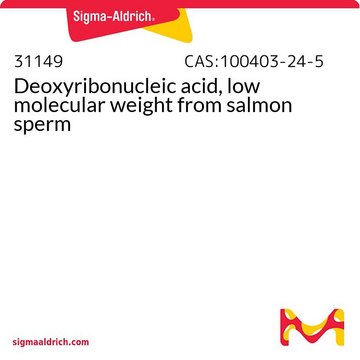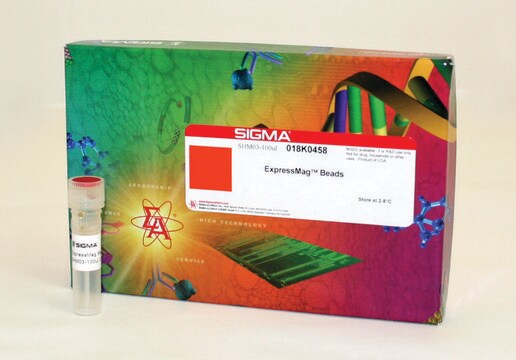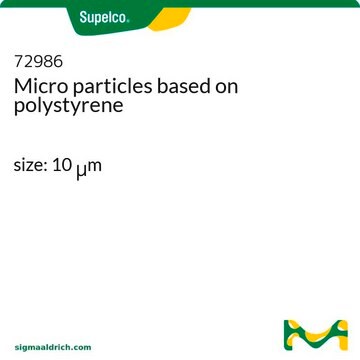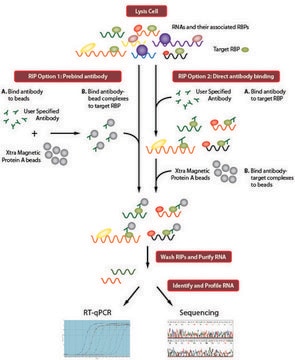P7458
PKH26 Reference Microbeads
Synonym(s):
Red PKH reference beads
About This Item
Recommended Products
storage condition
dry at room temperature
Quality Level
detection method
fluorometric
shipped in
wet ice
storage temp.
2-8°C
General description
Application
- as an internal counting control in flow cytometric acquisition and analysis
- for viable cell count analysis of fibroblasts
- for measuring the leukemic cell count by flow cytometry
Linkage
Storage Class Code
12 - Non Combustible Liquids
WGK
WGK 2
Flash Point(F)
Not applicable
Flash Point(C)
Not applicable
Choose from one of the most recent versions:
Already Own This Product?
Find documentation for the products that you have recently purchased in the Document Library.
Customers Also Viewed
Articles
A video about how you can use fluorescent cell tracking dyes in combination with flow and image cytometry to study interactions and fates of different cell types in vitro and in vivo.
PKH and CellVue® Fluorescent Cell Linker Kits provide fluorescent labeling of live cells over an extended period of time, with no apparent toxic effects.
Our team of scientists has experience in all areas of research including Life Science, Material Science, Chemical Synthesis, Chromatography, Analytical and many others.
Contact Technical Service